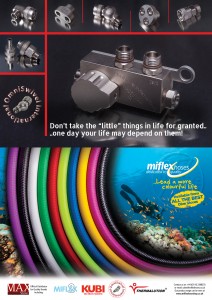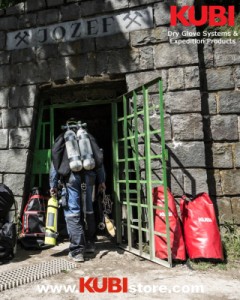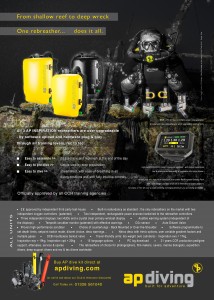DICTIONARY OF EGYPTIAN SHIPWRECKS-W
DICTIONARY OF EGYPTIAN SHIPWRECKS- W
FURTHER DETAILS CAN BE DOWNLOADED FROM
www.KUBIstore.com & www.Miflexhoseshop.co.uk
H.M.S. WATERHEN
Built by Palmers Shipbuilding and Iron Co at Jarrow in 1917, launched a year later. She was 1090 tons, 312 ft long, with a 30 ft beam. Her turbines delivered 27,000 shp making a top speed of 34 knots. Her armament consisted of four 4 inch guns, one 2 –pounder six 21 inch torpedoe tubes, triple mounted
Waterhen was paid off into reserve on 9 October 1934 but recommissioned on 14 April 1936. She was decommissioned again on 1 June 1938, and returned to service between 29 September and 10 November 1938
On 14 November, Waterhen sailed to Singapore, then after rendezvousing with the rest of the Australian Destroyer Flotilla (referred to as the “Scrap Iron Flotilla” by German propagandists), headed for the Mediterranean.[While en route, Waterhen detached to participate in the unsuccessful hunt for the German warship Admiral Graf Spee During the early part of her Mediterranean deployment, Waterhen was involved in convoy escort and anti-submarine patrols, but these were mostly uneventful until Italy entered the war in August 1940.
On 17 August, the destroyer performed shore bombardments of the Libyan coast. On 21 August, they did the same at Bardia. In October,Waterhen escorted supply ships to Crete, where a forward base was being set up to assist in the Allied reinforcement of Greece. On 25 December, the ship captured the Italian supply ship Tereremo Diritto. On 30 December, Waterhen unintentionally rammed and sank the anti-submarine trawler HMS Bandalero, and was forced to dock for repairs. In April, Waterhen became involved in Allied evacuations fromGreece and Crete. After this, she was assigned to the Tobruk Ferry Service; supply runs to the Allied force besieged at Tobruk.[
On 29 June, Waterhen and HMS Defender were making the run to Tobruk when they were attacked off Sollum by 19 Axis Junkers Ju 87 dive bombers (twelve German and seven Italian).] The attack heavily damaged the Australian destroyer (although the only casualty was a wound from a flying can of bully beef); Waterhen was hit in the stern by a single 500 kg (1,100 lb) bomb dropped by the Ju 87 piloted by MarescialloEnnio Tarantola (239th Dive Bombing Squadron, Regia Aeronautica), which caused the immediate flooding of the engine and boiler rooms. Defender took Waterhen in tow, but at 13:50 on 30 June 1941, the destroyer rolled over and sank. She was the first ship of the Royal Australian Navy to be lost by enemy action in World War II
She was leased by the Royal Australian Navy in 1933, joining the “Scrap Iron Flotilla”- Vampire, Vendetta, and Voyager, .and based in Alexandria. Commanded by Lt. Cdr. J.H. Swain r.a.n.. She had a compliment of 134.
Waterhen arrived in Malta on 14 December 1939. From 2 January 1940 the Flotilla formed the 19th Destroyer Division for service with the Mediterranean Fleet.On 27 May 1940 the 19th Destroyer Division and the 20th Destroyer Division ( Dainty, Decoy, Defender and Ddaimond) combined forces to form the 10th
WELBECK HALL
A 5,643 Grt. Steam Cargo Ship built at the William Doxford & Sons shipyard (Yard No. 463), Pallion, for the Welbeck Hall Steamship Co., Ltd., (Edward Nicholl, owner) London. She was launched 10 February 1914 and completed the following month with a length of 118.9 meters, beam of 15.9 meters, triple-expansion engine and a single propeller which gave her a maximum speed of 11 knots.
In 1917, the Hall Line was purchased by Hansen Brothers Ltd., Cardiff (Sven Wohlford Hansen, father Carl Hansen, and a brother). At some point during WWI, the ship was either leased or requisitioned for war use and provided defensive armament
On 22 April, while steaming on the Piraeus-Port Said route, the Wellbeck Hall was attacked, torpedoed, and sunk by the German submarine UB-53 (Robert Sprenger) approximately 75 miles Northeast-by-North from Port Said. 4 lives reported lost
S.S. WINDSOR HALL:
The Windsor Hall was a cargo ship of 3,693 Grt. built at W. Doxford & Sons, Ltd., Sunderland for the Windor Hall Steamship Co. Ltd., (Hansen Brothers, Ltd), Cardiff, London. Launched 21 July 1910 and completed the following August, the ship was 105.2 meters in length, 14.7 meters in beam, with a single screw and a cruising speed of 9.5 knots.
On 17 January 1918, while on the Karachi-Marseille route with a cargo of barley and grain, the Windsor Hall was torpedoed and sunk by the German submarine UB-66 (Fritz Wernicke) 45 miles Northwest of Alexandria with the loss of 27 lives. Master taken prisoner





